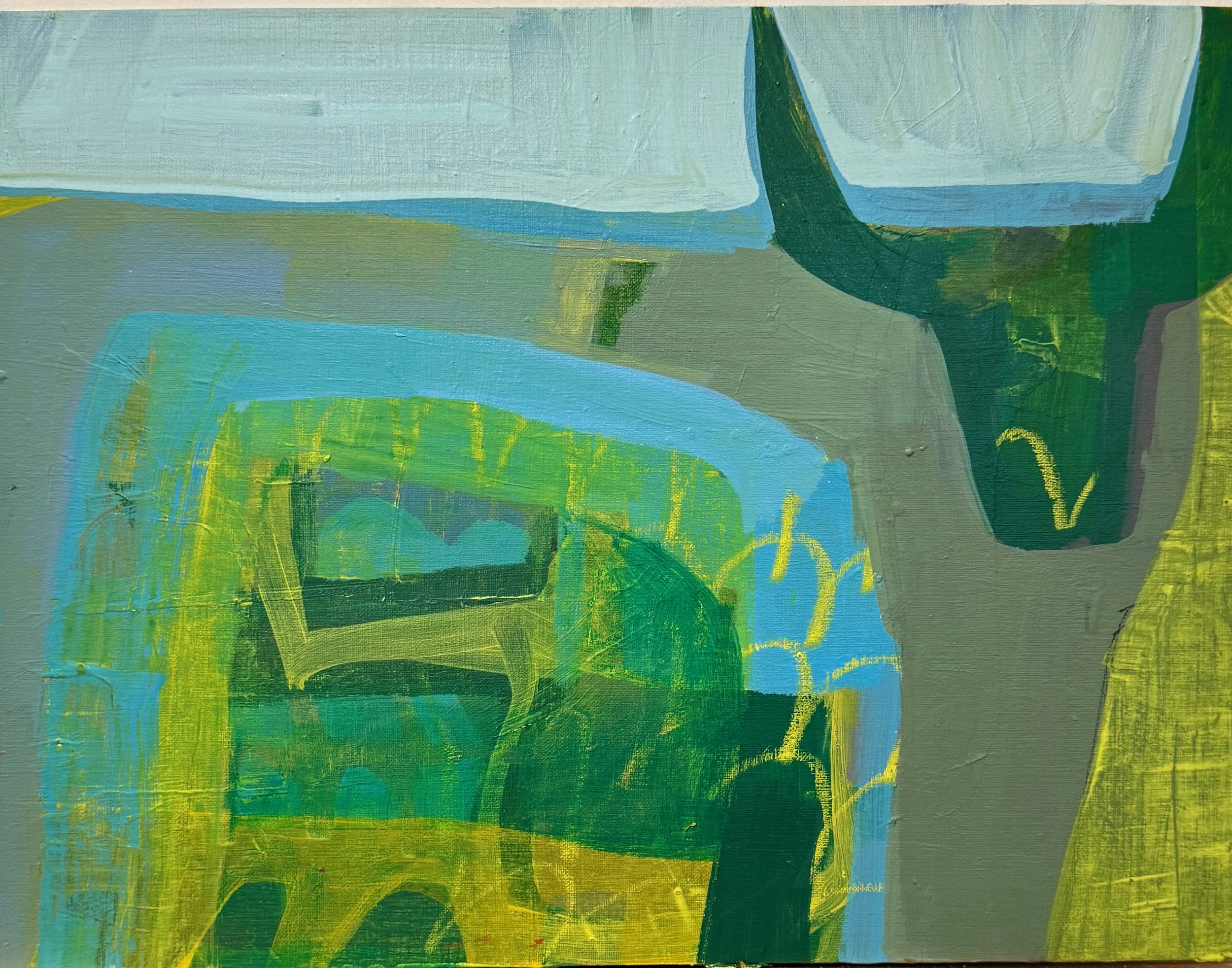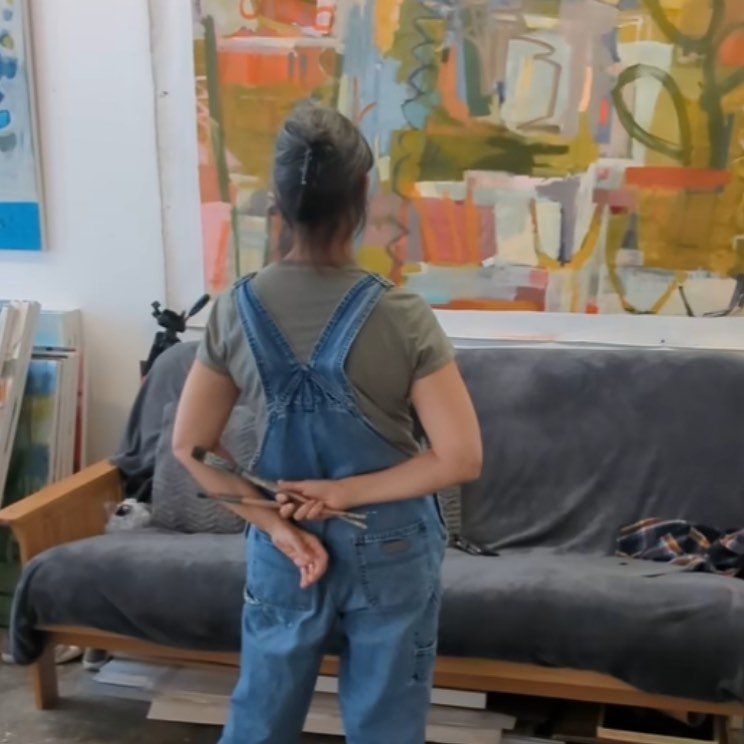Eight Ways to Connect to Expressionist Paintings
Author: Corkey Hay | Collector and Art History Enthusiast
Many people say, “I don’t understand abstraction or expressionism”—and that’s perfectly fine! Think of it like tasting wine for the first time. You wouldn’t expect to become an expert overnight; understanding wine requires a multi-sensory journey, engaging your senses, and learning to recognize subtleties. Experiencing expressive art is similar: it asks us to open up, bring our perspectives, and allow immersion. Each person brings something unique, with no single “right” reaction. Jodi Ferrier’s artwork invites you on this journey, beckoning you to explore and discover an emotional connection.
Expressionism as an Immersive Experience – Slow Down and Observe the Impact
Perhaps ask yourself: How does this painting make me feel? Expressionism prioritizes conveying emotions over realistic representation, so your initial response is key.
Expressionism uniquely taps into our inner emotions, offering layers of depth that realism often doesn’t reach. Rather than depicting reality, it creates a mirror for our subconscious, encouraging an intimate dialogue with the artwork. Ferrier’s expressive paintings immerse viewers in this conversation, sparking personal interpretations and responses. There is no need to bring a narrative or story, simply feel the painting.
Spend time with the painting. Instead of a glance, allow your eyes to wander over the entire canvas. Move closer and absorb yourself, then stand back and view it from afar. Take in the colors, textures, shapes, and movement.
Notice how your eyes are guided—does the painting have a focal point, or does it encourage free exploration?
Focus on Colors and Textures – Immerse Yourself in the Language of Color
Notice how the artist uses bold or unusual color combinations and expressive brushstrokes. Think about how these choices amplify the mood or energy of the piece.
Colors in expressionist art communicate directly with our emotions. Warm hues like red and orange evoke energy and passion, while cooler tones like blue and green bring calm and tranquility. Some colors may even trigger primal responses rooted in our evolutionary past, like red and orange, evoking a sense of excitement.
This isn’t just perception—Research shows these effects are not just emotional but physiological. According to Josephine Arendt, PhD and Anna Aulinas, MD, PhD, color, as light energy, stimulates the pituitary and pineal glands, influencing hormones like serotonin, which boosts happiness.
Ferrier’s instinctual use of color invites viewers to engage with their feelings, making the act of observing her work an experience. Reflect on how each color in a painting makes you feel.
Consider the Subject’s Distortion – The Transformative Power of Expressionist Art
Look at how the artist manipulates or exaggerates shapes, forms, or proportions. Give thought to what these distortions might reveal about the subject or the artist’s perspective.
Expressionism’s bold colors, dynamic strokes, layering, and exaggerated forms evoke feelings rather than replicate reality. Ferrier’s work exemplifies this, offering more than a visual experience—it can relax the mind, reduce stress, conjure up memories, and mirror your feelings. This transformative quality is why expressionism is often used in art therapy, fostering self-awareness and introspection.
Use Your Senses, Imagination, and Memories
How do you connect with the painting? Does it ignite memories? Does it spur your imagination? Can you let yourself go and experience the colors, shapes, and environment? What senses are aroused? What is the mood you feel?
Expressionist art invites presence and introspection, encouraging viewers to slow down and explore their emotions. Ferrier's mindful creative process, marked by emotional brushstrokes and layered details, brings her into a flow state. In turn, her paintings inspire self-discovery, offering freedom for personal interpretation and a deeper connection to one’s experiences.
Dive into the Artist’s Context – Build Connection With the Artist
Through expressionist art, we glimpse Ferrier’s perspective and begin to see her world through her brushstrokes. This forms a connection that transcends words. We begin to see the world through Ferrier’s eyes. As you walk through a field, enjoy a bouquet, or encounter everyday objects, notice the interplay of color, shape, and emotion in every object and environment. How would Ferrier paint what you encounter? Expressionist art provides an unconscious connection that transcends language.
Pay Attention to Scale — Size Effects Emotions
The size of a painting profoundly influences how it interacts with you physically and emotionally. A large canvas can dominate your field of vision, immersing you in its emotional intensity and making you feel as though you’re stepping into the artist’s world. In contrast, a smaller painting invites close inspection, drawing you into an intimate dialogue where subtle details and quiet emotions emerge. The scale of a painting shapes your experience, creating either an expansive, all-encompassing engagement or a personal, introspective connection.
Placing a “Small,” or “Little” expressionistic painting in an intimate space invites close, personal interaction, drawing the viewer to its subtle details and the interplay of colors. The setting amplifies the emotional impact, encouraging a deeper connection and reaction. In such a setting, the viewer is drawn into the fine details and subtleties, offering a sense of quiet reflection.
Whereas one “Small” or “Little” painting or a cluster of “Littles” on a larger wall creates a striking contrast, inviting curiosity and compelling the viewer to approach closely. The surrounding negative space of the wall magnifies its presence, drawing attention to its details and colors while encouraging an intimate, contemplative experience amidst the expansiveness.
The same holds true for an Oversized or Large painting in an intimate space. Filling a space can create a striking and strong experience. The painting dominates the room, enveloping the viewer and demanding attention. This proximity amplifies its emotional intensity, making the details, textures, and brushstrokes feel immediate and tangible. The contrast between the painting's scale and the room’s intimacy heightens its power and creates an almost immersive experience.
An Oversized or Large painting in a large space can feel majestic or commanding, amplifying its presence and allowing its scale to define the environment. The open surroundings may create a sense of grandeur or awe, giving the viewer room to step back and absorb the piece as a whole or to move closer and have their field of vision fully absorbed by the color and movement of the piece.
Reflection and Identifying Your Emotions
Living with expressionistic paintings brings your space a unique blend of emotional depth and visual energy. Depending on their tones and compositions, these artworks can evoke a sense of connection, inspire introspection, and foster a calming or invigorating atmosphere. By encouraging reflection and emotional engagement, expressionistic paintings transform a room into a personal sanctuary, promoting creativity, mindfulness, and a deeper appreciation for the beauty of human expression. Whether a bold centerpiece or a subtle accent, expressionistic paintings enrich your environment and experience.
In a world that often pulls us away from ourselves, expressionism invites us back to our inner lives, guiding us to a place of understanding, contemplation, and healing. Embracing this journey through expressionist art is a reminder that nurturing our unconscious can allow us to feel and connect—both with the world around us and with ourselves.















